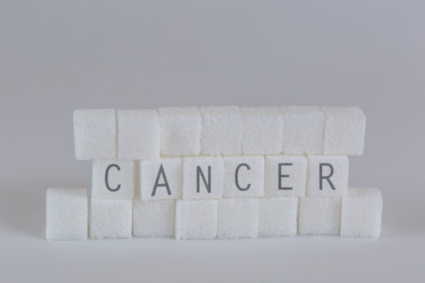Many patients have reported to us that their oncologist told them it was fine to consume simple sugar products as they had no effect on their cancer. Is this good science? We don’t think so.
Research has shown that approximately half of the U.S. adult population has either diabetes or prediabetes. Many people are unaware that they have one of these conditions. Generally, diabetes is defined as a fasting plasma glucose level of 126 mg/dL or higher, or a hemoglobin A1C blood value of 6.5 percent or greater. For prediabetes, the fasting plasma glucose level is 100 mg/dL to 125 mg/dL and an A1C between 5.7 percent and 6.4 percent. Your doctor can test these levels for you or drugstores carry home testing kits.
The underlying mechanism for most people with elevated blood glucose levels (type 2 diabetes, prediabetes) is insulin resistance. The term insulin resistance refers to the cells of your muscles, fat, and liver not responding to or accepting insulin properly. Since insulin transports glucose to your cells, the result is a high blood glucose level. The pancreas then produces more insulin in response to the higher blood glucose levels.
Emerging evidence has demonstrated a link between insulin resistance and a variety of precancerous or cancerous conditions. The excessive release of insulin is carcinogenic. This may be why people with type 2 diabetes who require insulin therapy have a higher risk of colorectal cancer. Other research shows that increasing doses of human insulin increases cancer mortality and risk of malignant cancer.
There are several mechanisms by which insulin resistance promotes cancer growth. This includes the activation of signaling cascades that promote tumor growth, activation of growth factors such as IGF and IGF-binding proteins, activation of inflammatory mediators, and increased levels of free hormone levels, such as estradiol.
People have insulin resistance due to a variety of reasons, including stress, medications, being overweight, environmental toxins, diet, and a lack of exercise. The typical North American diet is loaded with simple carbohydrates, which means lots of sugar. Simple carbohydrates in such foods as breads, pastas, sodas, cookies, pastries, and candies spike blood sugar levels, which results in the release of insulin.
The World Health Organization recommends an ideal amount of daily sugar intake that would be less than 5 percent of an adult’s calories from added sugar or from natural sugars in honey, syrups, soft drinks and sugar-sweetened beverages, and fruit juice. For a 2,000-calorie diet, this would be 25 grams.
Many people consume much more than this in just one meal-replacement bar or soda. To put this in perspective, the average American consumes 82 grams (19.5 teaspoons) of sugar daily! This, of course, leads to cancer-related insulin resistance and obesity, another risk factor for cancer.
One area of confusion is the topic of grains. Refined grain products are a major contributor of simple sugar and insulin resistance/diabetes in our country. The average American whole-wheat bread product has a higher glycemic index rating (how slowly or quickly a food increases blood glucose levels) than Coca-Cola!
The other issue to be aware of when eating carbohydrates, in addition to the glycemic index (available online), is the amount of carbohydrates you are eating, known as the glycemic load. If your carbohydrate intake is too low, you could feel tired and lose weight, which are symptoms to be monitored if you have cancer.
Reference:
This article was adapted with permission from the book Outside the Box Cancer Therapies by Dr. Mark Stengler and Dr. Paul Anderson (Hay House Publishing).
Dr. Mark Stengler is a leading Naturopathic Medical Doctor and author. He practices with his wife Dr. Angela Stengler, at the Stengler Center For Integrative Medicine in Encinitas, California (855-DOC-MARK). You can also sign up for his FREE Newsletter at Americasnaturaldoctor.com

